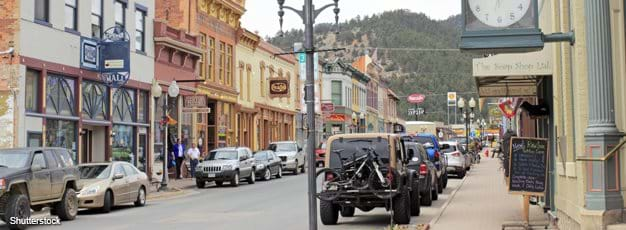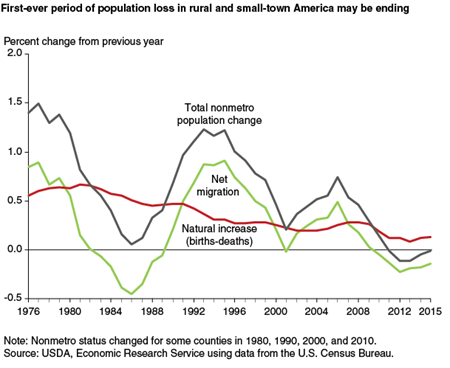Five Years of Population Loss in Rural and Small-Town America May Be Ending

The population in U.S. nonmetropolitan (nonmetro) counties stood at 46.2 million in July 2015—14 percent of U.S. residents spread across 72 percent of the Nation's land area. Nonmetro population declined by just 4,000 from July 2014 to July 2015 after 4 years of population losses averaging 33,000 yearly, according to the latest county population estimates from the U.S. Census Bureau. The 2014-15 improvement in nonmetro population change coincides with rural economic recovery and suggests that this first-ever period of overall population decline (from 2010 to 2015) may be ending.
County population change includes two components: natural change (births minus deaths) and net migration (in-migrants minus out-migrants). Nonmetro population growth from net migration peaked in 2006, then declined precipitously in response to rising unemployment, housing-market challenges, and other factors. Suburban expansion and migration to scenic, retirement/recreation destinations were primary drivers of nonmetro in-migration for several decades, but for the time being at least, their influence has considerably weakened. Widespread job losses in rural manufacturing caused by the recent economic recession, increased global competition, and technological changes contributed to the downturn in net migration, especially in eastern parts of the United States. However, this downturn appears to have bottomed out in 2012, and improving population trends since then coincide with a marked improvement in nonmetro employment growth.
Historically, nonmetro population grew because high rates of natural increase always offset any net migration loss. For example, net out-migration was more severe during the 1980s than in 2010-15, but overall population change remained positive because natural increase contributed roughly 0.5 percent growth annually, compared with 0.1 percent today. The Great Recession contributed to a downturn in natural increase, as fewer births occur during times of economic uncertainty. Lowering rates of natural change from 2008 to 2013 resulted in over 250 nonmetro counties experiencing natural decrease for the first time during 2010-15. Areas that recently began experiencing natural decrease are found in the Northeast, South, and, especially, in and around the margins of Appalachia, expanding a large region of natural decrease extending from Pennsylvania through northern Alabama. Population growth from natural change increased slightly since 2013, in line with a post-recession increase in births nationwide. If current trends continue, both net migration and natural increase will contribute to a recovery of population growth in rural and small-town America in the coming years.
Population & Migration, by John Cromartie, USDA, Economic Research Service, November 2023


